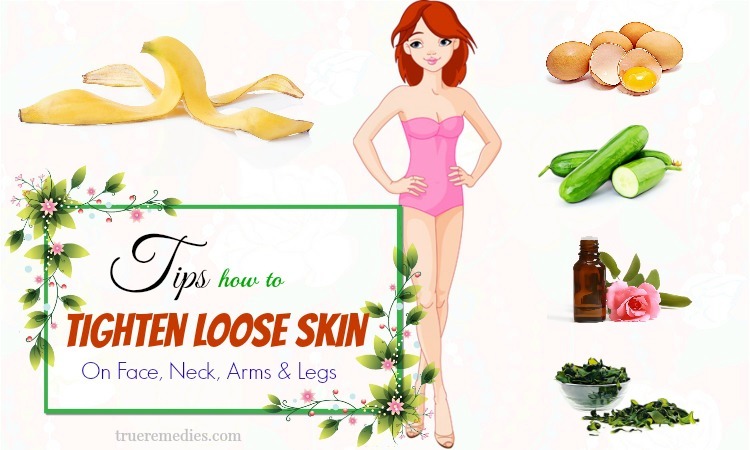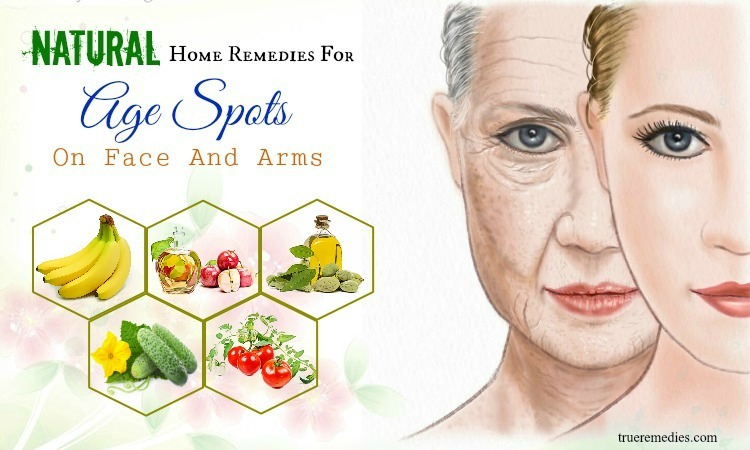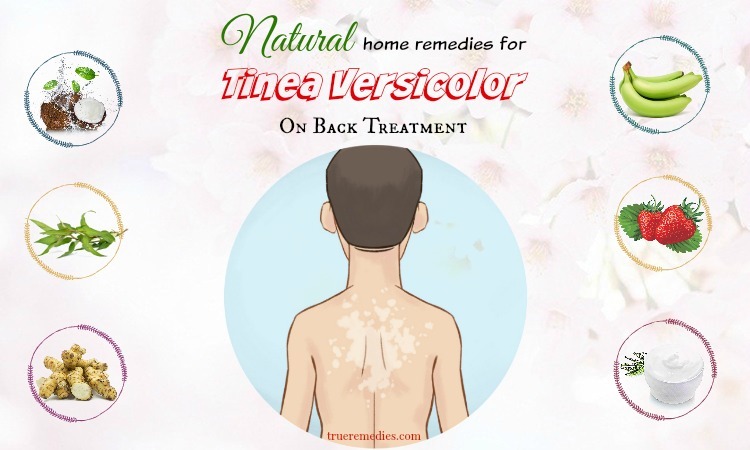Updated: 12/04/2019
Contents
Nowadays, because of the negative effects of the environment, skin issues such as skin infections, rashes, tags, and pigmentation have become more and more popular. Using chemicals and medications for these issues may bring quick results, but their side effects are often unavoidable. Therefore, many people prefer to use specific oils for skin issues and try their best to get rid of these problems gradually and naturally. This article will discuss the best oil for skin issues such as skin infections, rashes, tags, and pigmentation, and how to use them at home.
- 21 best natural cures for skin fungus (This article was medically reviewed/fact checked by Millie Lytle ND, MPH)
- Top 17 effective solutions for skin allergy itching relief
The Unexpected Benefits Of Using Oil For Skin Issues & Its Uses
I. Benefits Of Using Oil For Skin Issues
There are many types of oils which are all beneficial to the skin. They are extracted from plants, and are a great natural option for skin health. Additionally, many have antioxidant, anti-bacterial and anti-inflammatory properties, so they can help in the treatment of different skin issues. However, each type of oil has its own special properties and benefits, and is therefore suitable for different skin diseases and purposes.
II. How To Use
A. Best Oil For Skin Infection
1. Tea Tree Oil
Tea tree oil is extracted from tea tree leaves and is a great option for skin infections because it has antibacterial, antifungal and antiviral properties. It has been used for centuries and has been helpful in the treatment of skin problems such as acne, warts, and psoriasis. In 2004, a study showed that tea tree oil can kill Staphylococcus bacteria and helps to treat infection effectively[1]. Another study conducted in 2013 showed that patients who were treated with tea tree oil, along with conventional treatment, experienced faster healing time in comparison to those who were only conventionally treated[2].
Directions:
TrueRemedies Partner Solutions

Need a Help from the Leading Expert Online, Available 24/7?
They’re all here and ready to answer your questions online or by phone. Keep asking questions until you get the answer you need.
- Prepare a spray bottle
- Add to this bottle 3 drops of tea tree oil, 1 cup of white apple cider vinegar, 3 small cups of water, and 3 drops of lemon essential oil
- Shake to mix all of the above ingredients well
- *Apply first to a small area of the skin to check for any irritations or reactions. If no irritation occurs, then continue to the next step.
- Spray the above mixture to the affected area to help fight infection.
2. Cinnamon Oil
Cinnamon essential oil contains strong antibacterial properties, which can be helpful in treating many different types of infections. Moreover, cinnamon essential oil can fight both Gram-positive and Gram-negative bacteria such as Staphylococcus and E. coli, which can cause infectious diseases in human beings[3]. Adding a drop of cinnamon oil to your mouthwash or toothpaste can help to remove the unhealthy bacteria in your mouth and promote good oral hygiene.
3. Grapefruit Essential Oil
Grapefruit essential oil is extracted from the grapefruit's peel, and can effectively kill many different types of bacteria that cause infection and acnn[4] [5]. You can easily add 1 – 2 drops of grapefruit essential oil to a carrier oil and then apply it to the affected area. This oil can help to fight skin infections and promote clear skin. However, after applying anything with grapefruit essential oil, you should avoid direct sunlight because this type of essential oil can make your skin more prone to sunburn and the harmful effects of UV rays.
B. Best Oil For Skin Rashes
1. Lavender Oil
Lavender helps to soothe irritation on the skin and can help relieve pain. It has anti-inflammatory, antifungal, and antibacterial properties, and is therefore helpful in the treatment of many different kinds of skin diseases[6]. Ancient Europeans added lavender essential oil to their bathwater with the purpose of purifying their skin. This helped to not only cleanse their skin, but also to relax their body and mind. For skin rashes, you can add a few drops of lavender essential oil to the bathtub filled with water and soak your body in it. Or, you can mix several drops of lavender essential oil with coconut oil and then apply to the itchy skin area according to the below directions.
*Be sure to first test the lavender bath water or oil mixture on a small part of your skin to check for any irritation or reactions.
Directions:
- Prepare 12 drops of lavender essential oil with 30 ml of olive or fractionated coconut oil and mix them well
- Test the mixture on a small area of skin first to check for irritation or reaction.
- If no irritation occurs, then proceed with applying it to the desired areas of your skin.
- Repeat this once per day for best results
2. Rosemary Oil
Rosemary oil has anti-inflammatory and antibacterial properties, which are powerful in helping to treat infection and inflammation[7]. Moreover, using rosemary oil can help to relieve pain, itching, and irritation. It can also help to calm and soothe the infected and swollen skin area. For skin rashes, you can mix rosemary essential oil with a carrier oil such as coconut or jojoba oil and then apply the mixture to the affected skin area. Test the mixture on a small part of your skin first before applying it to the affected area.
3. Coconut Oil
Coconut oil is also said to be one of the best oils for skin rashes thanks to its strong anti-inflammatory and antimicrobial properties[8]. It can help to soothe the rash and prevent it from recurring. Moreover, using coconut oil is an effective way to nourish your skin and promote a healthy, beautiful glow.
Directions:
- Test the oil on a small area of skin first to check for irritation or reaction.
- If no irritation occurs, then proceed with applying it to the desired areas of your skin
- Wait for 30 – 60 minutes and then rinse off with clean water.
- Or, you can apply coconut oil in the evening, leave it through the night, and then wash off in the morning.
- Repeat daily for best results.
4. Castor Oil
Castor oil is rich in ricinoleic acid, which enhances this oil’s special anti-inflammatory propertiesy[9], Castor oil also helps to fight inflammation and reduce the swelling and pain. Moreover, it has moisturizing properties so it can help to nourish and soothe your skin. The antibacterial and antifungal properties of this oil make it a powerful adjunctive treatment for many skin conditions caused by infection and bacteria[10]. Regular use of castor oil can help to soothe and heal rashes quickly and improve the quality of skin cells.
Directions:
- Prepare 2 teaspoons of castor oil
- Test the oil on a small area of skin first to check for irritation or reaction.
- If no irritation occurs, then proceed with applying it to the desired areas of your skin.
- Wait for half an hour and rinse off with water
- Use daily for best results
- *Castor oil can permanently stain clothes and furniture. Please be mindful when using it around your belongings.
5. Neem Oil
Neem oil is an excellent option for skin rashes thanks to its anti-inflammatory and antiseptic properties[11] [12]. It can help not only in the treatment of skin rashes, but also to reduce the irritation and redness of the affected area quickly
Directions:
- Test the oil on a small area of skin first to check for irritation or reaction.
- If no irritation occurs, then proceed with applying it to the desired areas of your skin.
- After half an hour, rinse off with clean water.
- Repeat this remedy once per day for best results
6. Tea Tree Oil
Tea tree oil is wonderful for many kinds of skin conditions such as eczema, dermatitis and irritatios[13]. The antiseptic, antifungal and antiviral properties of this oil can help kill fungi, bacteria, and viruses living on your skis[14]. Therefore, using tea tree oil is helpful with not only addressing the underlying cause of skin rashes, but targeting many different kinds of skin infections.
Directions:
- Add 12 drops of tea tree oil to 30 ml of coconut oil or jojoba oil and mix them well
- Test the mixture on a small area of skin first to check for irritation or reaction.
- If no irritation occurs, then proceed with applying it to the desired areas of your skin.
- Apply daily, before bedtime, for best results
C. Best Oil For Skin Tags
1. Oregano Oil
Thanks to its antimicrobial and anti-inflammatory properties[15], oregano oil is a wonderful option for skin tags and warts. It is also useful in helping to treat skin issues such as acne, eczema, and rosacea. Be sure to consult with your doctor before using this oil to make sure your skin growth is not due to another underlying condition.
Option 1: Oregano Oil Only
Directions:
- Prepare 5 drops of oregano oil and then dip a toothpick in it
- Apply the toothpick to the skin tags
- Use dental floss to tie the tags
- Apply this oil three times per day until the skin tags fall
- *Discontinue if irritation, pain or redness occurs
- Apply antiseptic ointment and a bandage after the skin tag falls
Option 2: Oregano Oil And Coconut Oil
Directions:
- Prepare 2 – 3 drops of oregano oil; 5 drops of fractionated coconut oil and a cotton swab
- Mix oregano oil with coconut oil
- Apply the above mixture to the skin tags
- Repeat these directions twice or three times per day for best results.
- *Discontinue if irritation, pain or redness occurs
2. Jojoba Oil
Although the exact mechanism of action of jojoba oil is not well known, many people have found jojoba oil to be helpful in quickly and effectively removing skin tags. Additionally, jojoba oil contains anti-inflammatory agents, and can help in the treatment of skin infections and wound healing[16].
Option 1: Jojoba Oil Only
Directions:
- Take 1 to 2 drops of jojoba oil and apply it to the skin tag
- Massage the affected area with the oil
- Let the oil stay in your skin (do not wash it off)
- Apply this remedy twice per day, in the morning and evening, for optimal results
- *Discontinue if irritation, pain or redness occurs.
Option 2: Jojoba Oil, Orange Oil And Vitamin E
Directions:
- Add 1 tablespoon of jojoba oil to a small bowl
- Add to this bowl a few drops of orange oil, and the oil from 1 capsule of Vitamin E
- Mix all of the above ingredients well
- Test the mixture on a small area of skin first to check for irritation or reaction.
- If no irritation occurs, then proceed with applying and massaging it into the desired areas of your skin.
- Wait for 15 to 20 minutes and then wash off with clean water
3. Peppermint Oil
Peppermint oil has anti-inflammatory and antiseptic properties to help fight the bacteria and infection that cause many different skin conditions[17]. When it’s combined with castor oil, it can be an effective option for removing skin tags.
Directions:
- Add 2 – 3 drops of peppermint oil to a small cup
- Add to this cup the same amount of castor oil and mix them well
- Test the mixture on a small area of skin first to check for irritation or reaction.
- If no irritation occurs, then proceed with applying it to the desired areas of your skin, and let it stay on overnight.
- Wash off the above mixture in the next morning
- Re-apply this remedy daily for best results
4. Cinnamon Oil
Cinnamon oil has antibacterial and anti-inflammatory properties, and is a great option to help remove skin tags and even warts[18]. Some researchers have concluded that skin tags may be associated with diabetes[19] [20]. Cinnamon powder may help to promote healthy blood sugar regulation, which may help to prevent or manage symptoms of diabetes. Besides applying cinnamon oil to skin tags, you can also consider adding cinnamon powder to your daily meals to improve digestion, blood sugar regulation and potentially prevent future skin tags.
Directions:
- Prepare several drops of cinnamon oil, a bandage, and a cotton swab
- Use a cotton swab to apply cinnamon oil to the skin tags
- Cover the skin tags with a clean bandage
- Discontinue if irritation, pain or redness occurs
- Repeat daily for best results
D. Best Oil For Skin Pigmentation
1. Castor Oil
Castor oil is rich in omega-3 fatty acids, which can help to reduce the skin pigmentation[21]. Additionally, these fatty acids can help to nourish and moisturize your skin to promote the regeneration and development of healthy skin cells. Moreover, it can effectively brighten complexion by removing dark spots and reducing pigmentation.
Option 1: Turmeric And Castor Oil For Skin Pigmentation
Turmeric is also considered to be good at addressing hyperpigmentation as it can help to reduce inflammation and lighten dark spots on skin[22].
Directions:
- Prepare ½ teaspoon of turmeric powder and 1 teaspoon of castor oil and mix them well
- Test the mixture on a small area of skin first to check for irritation or reaction.
- If no irritation occurs, then proceed with applying it to the desired areas of your skin, and wait for 1 hour.
- Rinse off the mixture with warm water.
Option 2: Vitamin E And Castor Oil For Skin Pigmentation
Vitamin E is an excellent ingredient with antioxidant properties that can help to prevent damage to your skin and lighten the skin tone[23]. Applying the vitamin E and castor oil face mask regularly can help to brighten skin and promote a healthy complexion
Directions:
- Take a vitamin E capsule, pierce it and add the vitamin to a small cup
- Add to this cup 1 teaspoon of castor oil and mix them well
- Test the mixture on a small area of skin first to check for irritation or reaction.
- If no irritation occurs, then proceed with applying it to the desired areas of your skin and massage the affected area gently for 5-10 minutes.
- Rinse off the above mixture with cleanser as normal
- Repeat this twice per day for best results
Option 3: Lemon, Honey And Castor Oil For Skin Pigmentation
Honey can provide moisture and brightening effects to skin when used regularly. Lemon and castor oil can add to these benefits.
Directions:
- Prepare 1 teaspoon of castor oil, 1 teaspoon of honey and 1/2 teaspoon of lemon juice
- Add all of the above ingredients into a small bowl and mix them well until they are smooth
- Test the mixture on a small area of skin first to check for irritation or reaction.
- If no irritation occurs, then proceed with applying it to the desired areas of your skin and let sit for half an hour.
- Wash off with warm water and cleanser as normal.
2. Olive Oil
Olive oil is a great option for skin pigmentation as it has healthy fats, anti-inflammatory and antioxidant properties[24]. It is also effective at moisturizing skin and helping skin cells to remain healthy
Directions:
- Prepare 1 tablespoon of olive oil and a towelr
- Clean your skin and use the towel to dry it
- Test the oil on a small area of skin first to check for irritation or reaction.
- If no irritation occurs, then proceed with applying it to the desired areas of your skin and massage it in for 2 minutes.
- Clean your face after waiting for another 30 minutes and dry your skin.
3. Rose Essential Oil
Rose essential oil is not only famous for its romantic aroma but also its relaxing, uplifting and skin-supporting effects[25]. You can mix several drops of rose essential oil with argan oil and apply to the affected area. Remember to first test the mixture on a small area of skin to check for any irritation or reaction. Massage your skin while you are applying the oil for best results.
III. Side Effects And Precautions
- With any new oil or skincare product, be sure to test it on a small area of your skin to check for irritation or adverse reactions. If your skin becomes irritated, painful, red or swollen, wash off the oil and discontinue using it. Contact your doctor immediately if the reaction worsens, or persists for more than 3 days.
- When properly diluted, tea tree oil is considered safe. However, in some cases, it can burn or irritate skin when applied. Always dilute tea tree oil in water or a carrier oil (jojoba oil, coconut oil, etc.) before using.
- Castor oil may cause allergy to some people with sensitive skin. This oil can also permanently stain clothes and furniture. Caution is advised when using this oil around your belongings.
- Besides using oils, it is important to consider your diet as it plays an important role in many skin conditions[26]. A poor die, with high levels of sugar and processed foods, may worsen skin issues. In contrast, a healthy diet can help you to get rid of skin conditions quickly and even prevent them from reoccurring.
Above are the best oil for skin issues such as infection, rash, tags and pigmentation. We have also outlined simple ways for you to use these oils. If you have any questions, you can leave your comment under this article. All content provided is for informational and educational purposes only. Thus, before trying any of the above options, you should consult with a healthcare professional.









